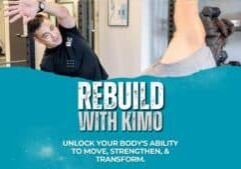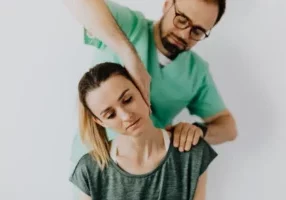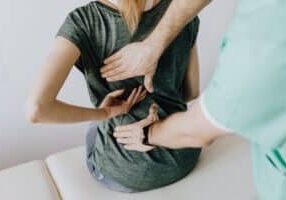At Head 2 Toe Spine and Sports Therapy, we believe that movement is the best medicine.
No matter how old you are, or what injuries you may sustain, the best way forward is to get moving.
Here are the four most common reasons why it’s easier to get hurt when we’re older:
- Loss of muscle mass and decreased core strength, leaving your spine and joints vulnerable to injury.
- Loss of elasticity in tendons and ligaments, which reduces flexibility and range of motion in your joints. Lack of flexibility means that your knees, hips, spine, shoulders, ankles, and feet experience greater stress during exercise. This stress will eventually damage your joints.
- Loss of cartilage in your joints and spine, which results in less cushioning. This can lead to joint pain or nerve entrapment and early arthritis.
- Deterioration of balance, which increases the risk of accidental falls and decreases your athletic performance.
The bottom line? You are more subject to injury as you age but that doesn’t mean you should stop moving! We’ve pulled together six steps you can take (at any age) to avoid injury.
1.Stretch and Foam Roll.
Do extra warm-up and flexibility exercises in order to prevent injury. Make sure to use your foam roller and lacrosse ball on a regular basis to lengthen your tissues and restore elasticity. Identify the short and tight muscles, and focus on lengthening those areas every day.
2. Don’t skip your rest days! You need more time to recover.
If you are either just starting to work out again, you are feeling beat up and sore, or you are an older athlete, make sure to give yourself more time to recover. The extra time can be for outright rest, active recovery, or a combination of both.
3. Boost your nutrition and antioxidants.
Aging athletes are more prone to free-radical damage. Consuming vitamin rich foods and antioxidants protects against these harmful compounds and repairs the body. Vitamins C and E are especially helpful to athletes. Controlled studies have shown these vitamins can dramatically reduce post-workout muscle soreness in the short term, and minimize long-term oxidative stress.
Eat nutrient dense foods, ensuring a wide variety of colorful fruits and vegetables. Try to get your carbohydrates from vegetables like yams, beats and root veggies. Eat clean protein sources, healthy fats and seeds, and drink your water!
4. Strengthen your core.
The older you get, the more critical it is to add strength training into your routine. One of the more crippling effects of aging for athletes is the gradual decrease of muscle mass, and the loss of strength that goes with it.
In order to get back into strength training without injury, it’s important to “organize” your core. A strong core protects your extremities and spine from injury.
5. Work on your balance.
It is well known that we lose our balance as we age, increasing our risk of falling. Everyone agrees falling is bad, especially as aging weakens the bones. One of the best ways to prevent falls is by improving balance using simple, everyday movements.
6. Get your sleep.
This may seem obvious, but chronic sleep deprivation is an epidemic in American society. Not getting enough rest is also harmful to both athletic performance and recovery. During sleep, the body secretes human growth hormone (HGH), which is a powerful agent of recovery. This plays a key role in body composition, cell repair and metabolism.
Are the effects of aging tripping you up and giving you pain?
It’s probably time for a body tune-up with the pros. Our goal at Head 2 Toe is to get you feeling great again and moving like you were meant to be.
Click here to learn about becoming a new patient, or call us at (425) 776-2936 to schedule your appointment.
Injury-Proof Your Body: How the REBUILD Program Can Help You Prevent Future Pain and Injury
We all know the frustration of an injury that sidelines us from the activities we love. Whether it’s a nagging backache that keeps you from your favorite sport or a sudden sprain that throws off your daily routine, pain and limitations can significantly impact our quality of life. But what if there was a way…
Read MoreBalancing Act: The Impact of Sports Injury Clinics on Work-Life Balance.
Explore how a sports injury clinic can improve your work-life balance in our blog ‘Balancing Act: The Impact of Sports Injury Clinics on Work-Life Balance’.
Read MoreAre Corrective Exercises Effective in Injury Recovery?
Explore the effectiveness of corrective exercises in injury recovery in our blog ‘Are Corrective Exercises Effective in Injury Recovery?’
Read MoreAdvanced Chiro Rehab Techniques: A Revolution in Pain Management
Discover groundbreaking chiro rehab techniques transforming pain management in our blog ‘Advanced Chiro Rehab Techniques: A Revolution in Pain Management’.
Read MoreUnderstanding the Importance of Spinal Rehab for Back Pain
Discover the crucial role of spinal rehab in managing back pain in our insightful blog ‘Understanding the Importance of Spinal Rehab for Back Pain’.
Read MoreExercises You Can Do at Home after a Visit to the Chiropractic Clinic
Stay active at home with exercises from ‘Exercises You Can Do at Home after a Visit to the Chiropractic Clinic’.
Read More





